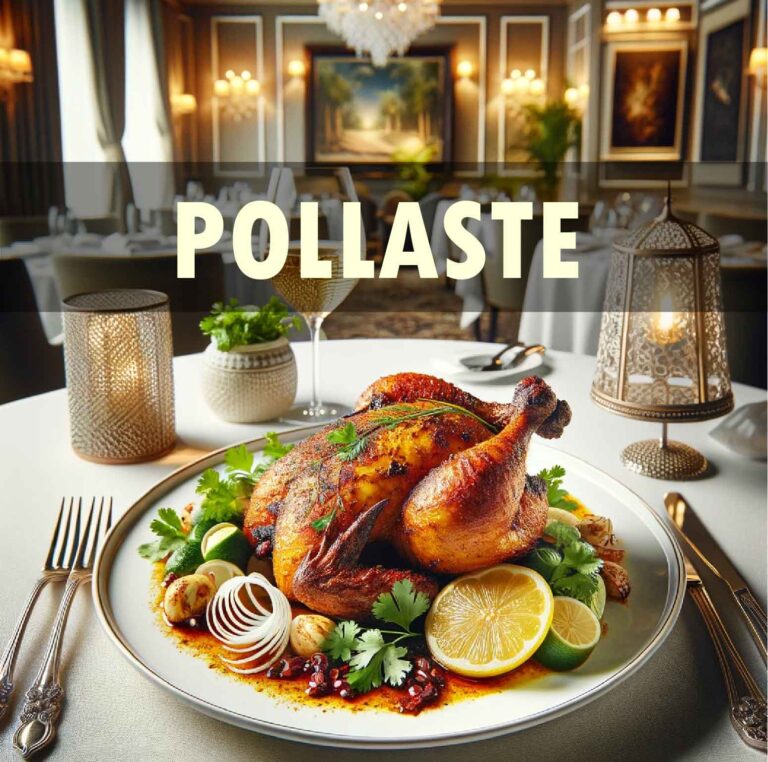Estonian cuisine, often overshadowed by its Nordic and Baltic neighbors, offers a unique blend of flavors and traditions that are truly captivating. One such culinary delight is ‘Pollaste‘, a dish that has been a staple in Estonian kitchens for generations. In this article, we will delve into the world of Pollaste, exploring its origins, ingredients, preparation methods, and the cultural significance it holds for the people of Estonia.
1. What is Pollaste?
Pollaste is a traditional Estonian dish that primarily consists of boiled or stewed meat, typically pork or beef, accompanied by a variety of vegetables and spices. The dish is known for its hearty and comforting nature, making it a popular choice during the cold winter months. Pollaste can be likened to a stew or casserole, but its unique combination of flavors and textures sets it apart as a distinct Estonian delicacy.
2. The Origins of Pollaste
The exact origins of Pollaste are somewhat obscure, but it is believed to have its roots in Estonia’s rich agricultural history. The dish likely evolved as a way for farmers and rural communities to make use of locally available ingredients, such as fresh meats and seasonal vegetables. Over time, Pollaste has become an integral part of Estonian cuisine, with each region and family adding its own unique twist to the traditional recipe.
3. Key Ingredients of Pollaste
The beauty of Pollaste lies in its simplicity and versatility when it comes to ingredients. While the core components typically include meat and vegetables, the exact ingredients can vary based on personal preferences and regional variations. Some of the key ingredients commonly found in Pollaste include:
Meat: Pork and beef are the most commonly used meats in Pollaste. These meats are often cut into bite-sized pieces and simmered until tender and flavorful.
Vegetables: Potatoes, carrots, onions, and cabbage are often included in Pollaste to add texture and depth of flavor. These vegetables are usually chopped or sliced and added to the pot along with the meat.
Spices and Herbs: Bay leaves, peppercorns, and salt are commonly used to season Pollaste. Some recipes may also include additional spices such as paprika, thyme, or rosemary to enhance the dish’s flavor profile.
4. Traditional Preparation Methods
Preparing Pollaste is a relatively straightforward process, but it requires time and patience to achieve the perfect balance of flavors and textures. The meat and vegetables are typically cooked together in a large pot or Dutch oven, allowing the flavors to meld together over low heat. Here’s a basic overview of the traditional preparation method:
Preparation: Start by cutting the meat and vegetables into bite-sized pieces. Season the meat with salt and pepper and set aside.
Sautéing: In a large pot or Dutch oven, heat some oil or butter over medium heat. Add the chopped onions and sauté until translucent.
Adding Meat: Add the seasoned meat to the pot and brown on all sides. This step helps to seal in the juices and adds depth of flavor to the dish.
Adding Vegetables and Spices: Once the meat is browned, add the chopped vegetables and spices to the pot. Stir well to combine.
Simmering: Pour enough water or broth into the pot to cover the meat and vegetables. Bring the mixture to a boil, then reduce the heat and simmer for 1-2 hours, or until the meat is tender and the vegetables are cooked through.
Adjusting Seasoning: Taste the Pollaste and adjust the seasoning as needed. You can add more salt, pepper, or spices to suit your personal preferences.
Serve: Once the Pollaste is ready, ladle it into bowls and serve hot, preferably with freshly baked bread or a side of pickled vegetables.
5. Variations of Pollaste
As with any traditional dish, there are countless variations of Pollaste that have been passed down through generations of Estonian families. Some popular variations include:
Fish Pollaste: In coastal regions, fish such as cod or herring may be used instead of meat to create a lighter and more seafood-focused version of Pollaste.
Vegetarian Pollaste: For those who prefer plant-based options, a vegetarian version of Pollaste can be made using mushrooms, lentils, and a variety of seasonal vegetables.
Spicy Pollaste: To add a kick of heat, some recipes incorporate spicy peppers or chilli flakes into the mix, creating a fiery and flavorful variation of the traditional dish.
6. The Cultural Significance of Pollaste
Pollaste is more than just a dish; it is a symbol of Estonian culinary heritage and community. For many Estonians, preparing and enjoying Pollaste is a cherished tradition that brings families and friends together, especially during holidays and special occasions. The dish is often prepared in large quantities and shared amongst loved ones, creating a sense of warmth, comfort, and connection that is deeply ingrained in Estonian culture.
7. Conclusion: Embracing the Flavors of Estonia with Pollaste
In conclusion, Pollaste is a delightful and hearty dish that offers a glimpse into the rich and diverse world of Estonian cuisine. It’s simple yet flavorful ingredients, traditional preparation methods, and cultural significance make it a beloved favorite among locals and visitors alike. Whether you’re a seasoned food enthusiast or a curious traveller looking to explore the tastes of Estonia, Pollaste is a must-try dish that is sure to leave a lasting impression. So, roll up your sleeves, gather your ingredients, and embark on a culinary journey through Estonia with this delicious and comforting dish!

